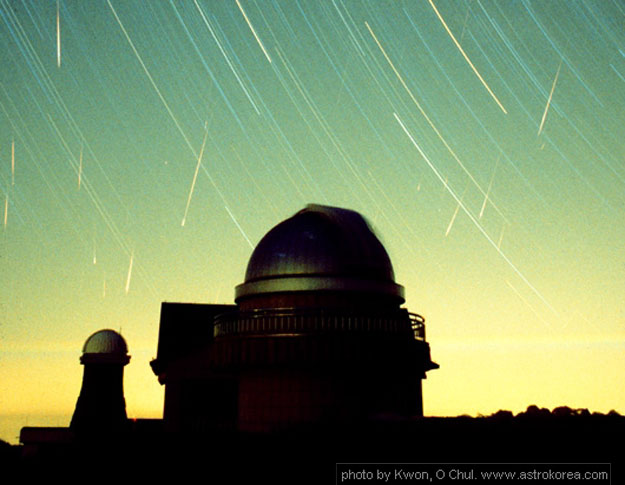
|
Credit: O Chul Kwon
(SoBaekSan National Observatory)
Explanation:
There were two peaks to this year's
Leonid Meteor Shower.
The first peak was best seen during the early morning hours of November 18 in
North America,
while the second peak, almost twice the intensity of the first,
occurred eight hours later and was best seen from
Asia.
Pictured above is an image of
SoBaekSan National Observatory in
Korea during the
second Leonid peak, starting at 3:50 am local time.
Visible in the background are
numerous Leonid meteors
bright enough to be seen over background light even
during the 40-minute exposure.
Local observers reported an average of over one
meteor
per second during this outburst.
Next year's Leonid Meteor Shower might be even more
intense but will have to compete will the glare of a nearly
full moon.
|
January February March April May June July August September October November December |
| |||||||||||||||||||||||||||||||||||||||||||||||||||||||
NASA Web Site Statements, Warnings, and Disclaimers
NASA Official: Jay Norris. Specific rights apply.
A service of: LHEA at NASA / GSFC
& Michigan Tech. U.
Based on Astronomy Picture
Of the Day
Publications with keywords: southern sky - Comet Linear WM1 - comet
Publications with words: southern sky - Comet Linear WM1 - comet
See also:
